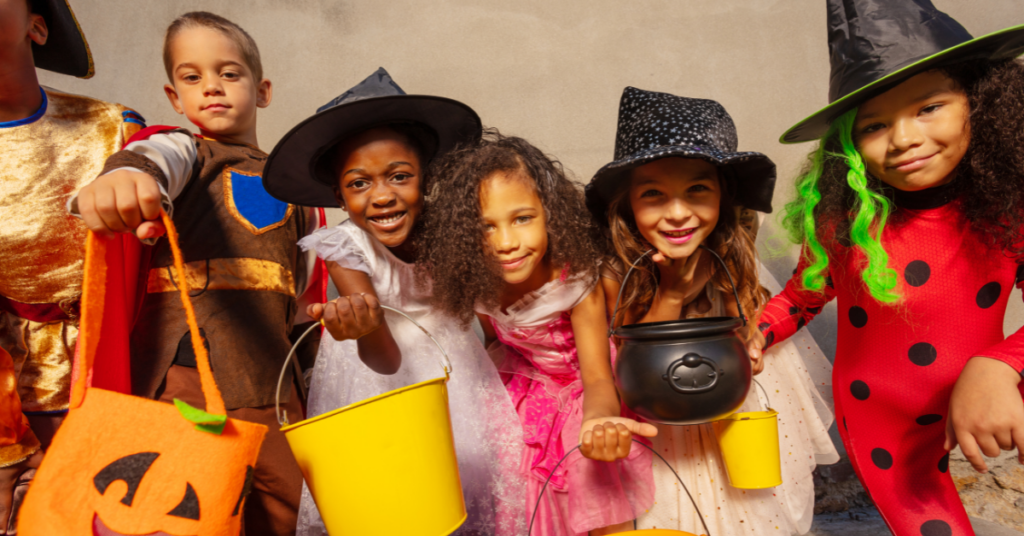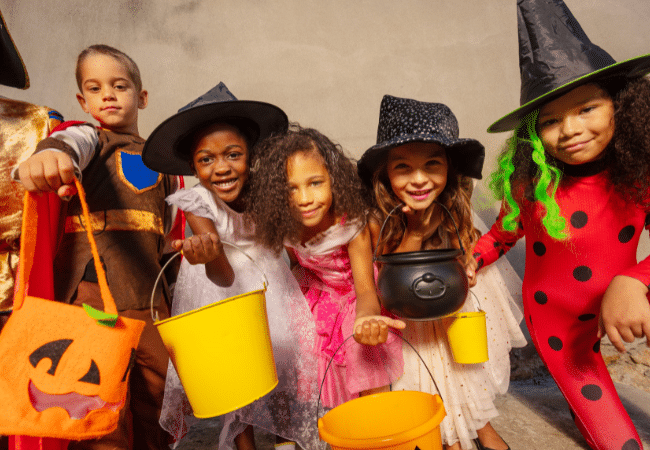Halloween and type 1 diabetes: 5 tips for families

Your child should never miss out on fun experiences because of their type 1 diabetes (T1D) – and Halloween is no exception!
As the spooky season continues to rise in popularity in Australia, more families are taking part in the traditions of wearing fun costumes and trick-or-treating. And, of course, eating all the lollies and treats that come with that.
As always, families are encouraged to not let T1D get in the way of these milestone events – after all, you want your child who lives with T1D to have as much fun and feel as included as their siblings and friends. You just need to plan ahead so your child can stay safe and healthy while making amazing memories with their family and friends.
Read more tips on T1D and parties and special events.
1. Forget about perfection
Try to keep in mind that no one can ever be perfect all the time, especially when it comes to blood glucose levels (BGLs). You’re setting yourself up to fail if you try to keep your child in their target range all the time – and this is even more true when your child is in ‘fun mode’ and living their best Halloween life!
The activity and excitement around trick-or-treating can contribute to unexpected changes to BGLs – you might find that your child’s BGLs go low due to the extra exercise, or they may go higher as a result of the excitement or adrenaline. Be sure to talk to your diabetes team about how to manage this.
But it’s always a good idea to accept that you’re probably not going to be able to keep their BGLs perfectly in range, and just do your best.
2. Plan ahead
If your child is wearing a special costume for Halloween, it’s a good idea to make sure they can easily access their diabetes tech, like their insulin pump or continuous glucose monitor.
And remember to their diabetes kit if you’re heading out and about!
If you can, try to get your child to eat a good meal before they go out. A mix of high-fibre carbs, protein and vegies will help fill them up and can help keep their BGLs a bit more stable for all the fun that’s to come.
3. Manage the Halloween treats
We know that moderation is usually best, but this can go out the window at special times, like Halloween!
Let your child enjoy some treats – the Royal Children’s Hospital Melbourne recommends opting for chocolate over other lollies like jelly snakes or Skittles, as it has a lower glycaemic index.
Try to spread the lollies out. Keep them so they can be used as hypo treatments, or let your child enjoy them as a treat every now and then.
Remember to check the nutritional value for the lollies your child eats and dose their insulin in response.
Also be careful with sugar-free treats. They can seem like a good idea but their isomalt or maltitol ingredients mean they can work as laxatives. Some people are affected after only eating a few, so beware!
4. Consider the Switch Witch
Some families like the idea of the Switch Witch.
This tradition has kids choose which treats they want to keep, which ones they want to swap with friends or family, and which ones they’d like to part with. They leave the lollies they don’t want out when they go to bed, and the Switch Witch then takes them away and leaves a gift in their place. Some Switch Witches leave a toy (or something the child would want), and others leave cash.
Just make sure you talk about it all before Halloween, so your child understands what’s happening when the Switch Witch comes!
5. Be mindful of exercise
With your child running around the neighbourhood trick-or-treating, their exercise levels will be up. This will impact their blood glucose levels. Keep this in mind if you’re dosing with insulin injections or making adjustments on their insulin pump.
If your child’s BGLs are trending low, let them choose an extra treat.
Watch our video on managing exercise in kids with T1D below.
Read more




